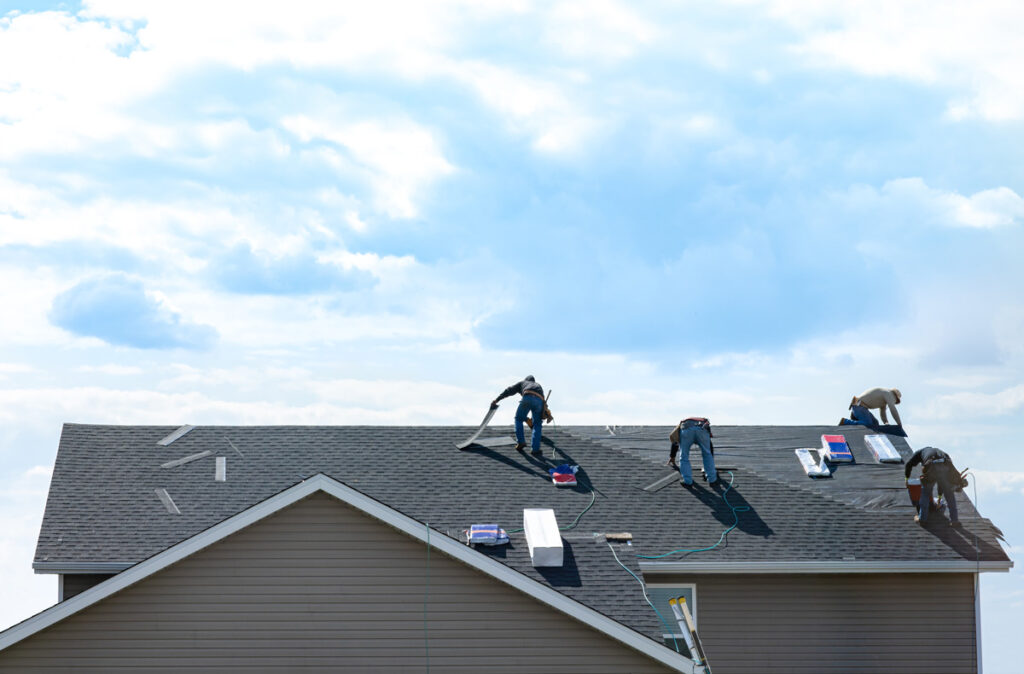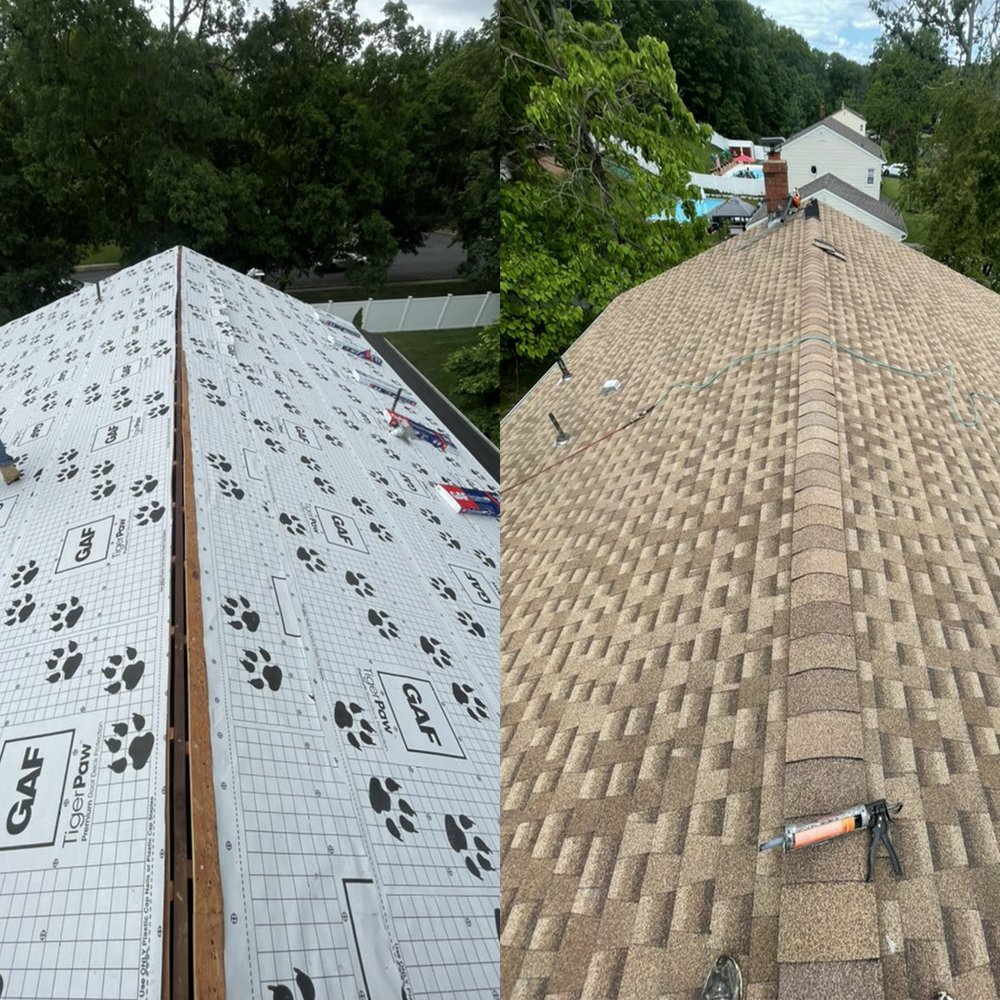Recognizing the Various Kinds Of Roofings: A Comprehensive Overview for Homeowners
In the world of homeownership, selecting the suitable roof covering design is a choice that carries significant implications for both functionality and aesthetic appeal. With a range of choices-- ranging from the conventional gable to the contemporary flat-- each type presents distinct advantages and challenges that ought to align with the property owner's ecological factors to consider and certain demands. Comprehending these distinctions not only aids in making an enlightened selection however likewise influences long-term upkeep and power effectiveness. As we explore the complexities of various roof kinds, it ends up being apparent that one dimension does not fit all; the ideal option may surprise you.
Gable Roofs
Gable roof coverings, defined by their triangular form, are among one of the most popular roof covering styles as a result of their simplicity and efficiency in shedding water and snow. This style includes two sloping sides that fulfill at a ridge, allowing for reliable drainage and minimizing the danger of water buildup. The steep pitch generally connected with saddleback roofs enhances their ability to manage heavy rainfall, making them suitable for various environments.
Along with their useful advantages, gable roof coverings provide visual versatility. They can be adapted to different building designs, from typical to modern homes. The style can likewise suit added features such as dormer windows, which enhance natural light and ventilation in the attic room area.
In addition, saddleback roofs offer adequate room for insulation, adding to power efficiency. Home owners can choose from a variety of roof covering products, consisting of asphalt roof shingles, metal, and ceramic tiles, better enhancing personalization choices.
Despite their advantages, saddleback roofs might need added assistance in locations vulnerable to high winds or hefty snowfall. Overall, the gable roofing system stays a popular option due to its blend of capability, longevity, and visual allure.
Apartment Roofs
Level roofings are commonly acknowledged for their minimalist design and practical applications, specifically in industrial and business settings (oahu roofing). These roofs include a straight or almost horizontal surface area, which enables for easy construction and functional area usage. While they might lack the visual charm of angled roofs, level roofs offer countless advantages, especially in city atmospheres where making the most of space is crucial
Among the primary advantages of flat roof coverings is their access. Property owners can utilize the roofing space for numerous purposes, such as roof gardens, balconies, or solar panel setups. Additionally, flat roofs are normally more cost-efficient to install and keep contrasted to their sloped counterparts, as they need less products and labor.
Common materials used for flat roofing systems include built-up roof (BUR), customized bitumen, and single-ply membrane layers, each offering unique advantages. Generally, level roofings serve as a adaptable and practical option for numerous property owners and companies alike.
Hip Roofing Systems
Hip roofing systems are defined by their sloped sides that converge at the top, forming a ridge. This layout is distinctive from saddleback roofs, as all 4 sides of a hip roofing incline downwards toward the walls, giving an extra secure structure. The angle of the slopes can differ, permitting for convenience in building aesthetics and capability.
Among the primary advantages of hip roofing systems is their ability to stand up to hefty winds and negative weather. The sloped surface areas allow better water drain, minimizing the risk of leakages and water damage. Additionally, hip roof coverings use enhanced attic room area, which can be utilized for storage space or perhaps transformed into livable locations.
However, creating a hip roofing system can be more pricey and complicated than less complex roofing kinds, such as saddleback roofs. The additional product and labor involved in producing the inclines and making sure proper structural integrity can cause greater costs. Regardless of these disadvantages, several house owners prefer hip roofing systems for their resilience, visual allure, and capacity for power efficiency.
Mansard Roofings
Mansard roof coverings, frequently identified by their unique four-sided style, attribute 2 slopes on each side, with the lower incline being steeper than the upper. This architectural style, stemming from France in the 17th century, is not just cosmetically attractive however useful, as it makes the most of the functional room in the top floors of a building. The steep reduced incline enables even more headroom, making it a perfect option for lofts or attics, which can be exchanged living spaces.
Mansard roof coverings are characterized by their adaptability, suiting numerous building designs, from traditional to modern. They can be constructed with different materials, great site including asphalt shingles, slate, or metal, supplying home owners with an array of options to match their choices and spending plans. In addition, the layout enables the combination of dormer home windows, improving natural light and ventilation in the upper degrees.
However, it is vital to think about the potential drawbacks. Mansard roofs might call for even more maintenance due to the intricacy of their layout, and their high slopes can be challenging for snow and rainfall drainage. Generally, mansard roofing systems combine elegance with usefulness, making them a preferred option among property owners seeking distinct building functions.
Shed Roof Coverings
As home owners progressively seek simpleness and capability in their architectural designs, lost roofs have actually arised as a prominent choice. Characterized by a solitary sloping airplane, a shed roofing system offers a minimalist visual that matches anonymous various home designs, from contemporary to rustic.
One of the primary advantages of a shed roofing is its uncomplicated construction, which often translates to reduce labor and product expenses. This design allows for effective water drainage, minimizing the danger of leakages and water damage. Furthermore, the upright incline provides adequate room for skylights, enhancing natural light within the interior.
Dropped roof coverings also use convenience in regards to usage. They can be successfully incorporated right into additions, garages, or outdoor structures like sheds and pavilions. Moreover, this roof covering design can accommodate numerous roofing materials, including metal, asphalt roof shingles, and even environment-friendly roofs, aligning with green campaigns.
However, it is vital to take into consideration local environment problems, as heavy snow tons may necessitate adjustments to the roofing system's angle or structure. Overall, shed roofing systems present a useful and aesthetically pleasing option for homeowners wanting to make best use of capability without endangering design.
Final Thought


Gable roofs, defined by their triangular form, are among the most prominent roof covering styles due to their simpleness and efficiency in losing water and snow. oahu roofing. The steep pitch typically linked with gable roofs improves their capacity to take care of heavy precipitation, making them appropriate for numerous environments
While they may lack the aesthetic charm of pitched roof coverings, flat roofing systems use countless advantages, especially in metropolitan atmospheres where making the most of area is vital.
